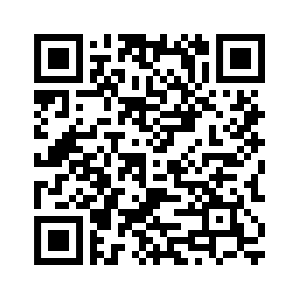Carbohydrate counting for children with diabetes type 1
Abstract
Type 1 Diabetes Mellitus (DM1) is an endocrine disease with autoimmune bases that mainly affects children and adolescents. It is characterized by progressive loss of beta cells mass to a critical level where the ability to release the insulin, needed for the utilization of glucose by tissues, is affected, triggering microvascular damage, main long-term complication. Short-term complications are diabetic keto-acidosis and, secondary to insulin therapy, the hypoglycemia. Although insulin therapy is the mainstay of treatment, sometimes it is difficult to calculate the proper dosage for precise glycemic control; carbohydrate counting plays an important role here in the optimization of postprandial glycemic levels, which is demonstrated by the correct levels of glycosylated hemoglobin (HbA1c). This review seeks to assess the available scientific evidence on the effectiveness of carbohydrate counting in children with DM1. Search until May 2014 was conducted in PubMed, Trip database, Cochrane and academic Google; three clinical trials performed in individuals under 18 were found. The studies demonstrate effectiveness but the quality is not strong enough. No systematic reviews were found. A more exhaustive search and possibly more clinical trials are needed to be recommended as a technique of metabolic control of Type 1 Diabetes Mellitus in children.Downloads
References
Garcia H., Roman R. Guía clínica Diabetes Mellitus Tipo 1. Santiago de Chile. MINSAL mayo, 2013.
Stephen C., Ragnar H. Global IDF/ISPAD Guideline for diabetes in childhood and adolescence. Brussels, Belgium. 2011.
Definition and diagnosis of diabetes mellitus and intermediate hyperglycemia : report of a WHO/IDF. (Consultado el 10 Enero 2014) Accesible en: http://www.who.int/diabetes/publications/Definition%20and%20diagnosis%20of%20diabetes_new.pdf
Contreras C. Diabetes mellitus. 2 edition. Santiago de Chile: Editorial Mediterráneo, 2004.
Atkinson MA. The Pathogenesis and Natural History of Type 1 Diabetes. Cold Spring Harbor Perspectives in Medicine. 2012;2(11)
Lammoglia J., et al. Guia de practica clinica sobre diabetes mellitus tipo 1, Ministerio de la Protección Social. Agosto 2009.
García H. Etiopatogenesis de la diabetes mellitus tipo 1. Rev. Chilena de endocrinología. 2009; 4: 228-234.
Aschner P. Epidemiologia de la diabetes en Colombia. Av Diabetol.2010; 26: 95-100.
The DIAMOND Project Group. Incidence and trends of childhood Type 1 diabetes worldwide 1990-1999. Diabetic Medicine 23, 857-66; 2006.
Achenbach P, Bonifacio E, et al. Natural history of type 1 diabetes. Diabetes journal 2005; 54: 25-31.
Dabelea D, Pihoker C, Talton JW, D’Agostino RB Jr, Fujimoto W, Klingensmith GJ, et al. SEARCH for Diabetes in Youth Study. Etiological approach to characterization of diabetes type: the SEARCH for Diabetes in Youth Study. Diabetes Care. 2011;34(7):1628-33.
Bantle JP, Wylie-Rosett J, Albright AL, Apovian CM, Clark NG, Franz MJ, et al. Nutrition recommendations and interventions for diabetes: a position statement of the American Diabetes Association. Diabetes Care. 2008 Jan;31 Suppl 1:S61-78.
Using carbohydrate counting in diabetes clinical practice. Journal of the american dietetic association, 1998;
(8): 898-905.
Rodriguez L. Manejo de la técnica de conteo de hidratos de carbono en elpaciente con diabetes. Asociación latinoamericana de Diabetes 2006; 14(2).
Guía de Práctica Clínica sobre Diabetes mellitus tipo 1. Agencia de Evaluación de Tecnologías Sanitarias del País Vasco-Osteba 2012.
Hayes Dorado JP. Actualización Diabetes Mellitus tipo 1. Rev SocBolPed 2008; 47(2): 90-96.
Nathan et al. The effect of intensive treatment of diabetes on the development and progression of long termo complications in insulin.Nejm 1993; 329(14): 977-986.
Wolever TM, Hamad S, Chiasson JL, Josse RG, Leiter LA, Rodger NW, et al. Day-to-dayconsistency in amount and source of carbohydrate intake associated with improved bloodglucose control in type 1 diabetes. J Am CollNutr 1999; 18 (3):242-247.
Nielsen JV, Jonsson E, Ivarsson A. A low carbohydrate diet in type 1 diabetes: clinical experience—a brief report. Ups J MedSci 2005;110(3):267 – 273
Training in flexible, intensive insulin management to enable dietary freedom in people withtype1 diabetes: dose adjustment for normal eating (DAFNE) randomized controlled trial. BMJ 2002 Oct 5;325(7367):746-751.
Lowe J, Linjawi S, Mensch M, James K, Attia J. Flexible eating and flexible insulin dosing in patients with diabetes: Results of an intensive self-management course. Diabetes Res ClinPract 2008 Jun;80(3):439-443.
Sanjeev N., Quinn N. Impact of Carbohydrate Counting onGlycemic Control in Children With Type 1 Diabetes. Diabetes care 2009;32(6).
Marigliano M, Morandi A, Maschio M et al. Nutritional education and carbohydrate counting in children with type 1 diabetes treated with continuous subcutaneous insulin infusion: the effects on dietary habits, body composition and glycometabolic control. Acta Diabetol (2013) 50:959–964.
Gokşen D., Atik Y. Effects of Carbohydrate Counting Method on Metabolic Control in Children with Type 1 Diabetes Mellitus. J Clin Res Pediatr Endocrinol 2014;6(2):74-78.
Delgado-Noguera, M. Pregunta estructurada y búsqueda de la literatura médica: El primer paso en la práctica de la medicina basada en la evidencia. Revista de La Facultad Ciencias de La Salud, Universidad Del Cauca, 2010;12(4), 45–49.
Lema A, Urueña M, Barrera P, Implementación del Conteo de carbohidratos en niños con diabetes tipo 1, Resúmenes XIII Congreso de la Asociación Latinoamericana de Diabetes. Disponible en: www.alad-latinoamerica.org (Consultado 23 de Febrero 2014).












.png)



